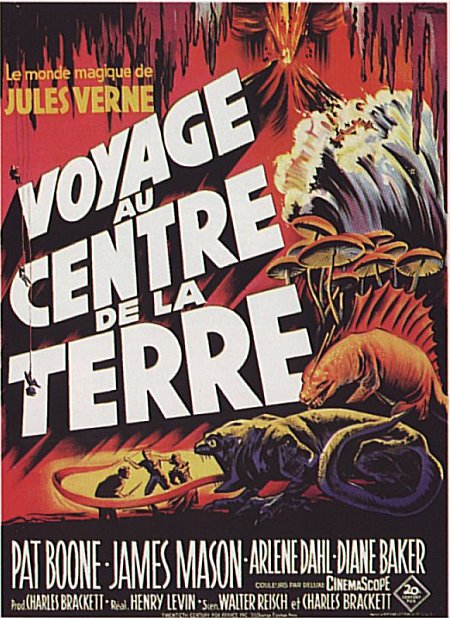Well, that was fun.
My first experience with Jules Verne. He's exactly the kind of writer I would have loved as a teenager. What am I saying...he's exactly my kind of writer now, too.
I mean, friggin' dinosaurs, man! Of course I'm all in.
And for the record I read the English translation by Frederick Malleson. So maybe you're used to 'A Journey to the Center of the Earth', or 'Centre of the Earth', or maybe 'Voyage' instead of 'Journey', or maybe you saw something with Brendan Fraser in it. Either way, same damn story. A couple of dudes make a long trip through Middle Earth and end up in a volcano. ... WAIT, NO.
Thus were formed those immense coalfields, which nevertheless, are not inexhaustible, and which three centuries at the present accelerated rate of consumption will exhaust unless the industrial world will devise a remedy.
That was written in 1864. So next time someone tells you that the idea of fossil fuels being a non-renewable resource was just an idea concocted by environmentalists and big oil to drive up costs and make money, keep in mind that it's been recognized as fact for at least 100 years. Rockefeller hadn't even gone into oil yet.
And here's a rather large chunk that I nontheless loved:
All this fossil world rises to life again in my vivid imagination. I return to the scriptural periods or ages of the world, conventionallycalled 'days,' long before the appearance of man, when the unfinished world was as yet unfitted for his support. Then mydream backed even farther still into the ages before the creation of living beings. The
mammals disappear, then the birds vanish, then the reptiles of the
secondary period, and finally the fish, the crustaceans, molluscs,
and articulated beings. Then the zoophytes of the transition period
also return to nothing. I am the only living thing in the world: all
life is concentrated in my beating heart alone. There are no more
seasons; climates are no more; the heat of the globe continually
increases and neutralises that of the sun. Vegetation becomes
accelerated. I glide like a shade amongst arborescent ferns, treading
with unsteady feet the coloured marls and the particoloured clays; I
lean for support against the trunks of immense conifers; I lie in the
shade of sphenophylla (wedge-leaved), asterophylla (star-leaved), and
lycopods, a hundred feet high.
Ages seem no more than days! I am passed, against my will, in
retrograde order, through the long series of terrestrial changes.
Plants disappear; granite rocks soften; intense heat converts solid
bodies into thick fluids; the waters again cover the face of the
earth; they boil, they rise in whirling eddies of steam; white and
ghastly mists wrap round the shifting forms of the earth, which by
imperceptible degrees dissolves into a gaseous mass, glowing fiery
red and white, as large and as shining as the sun.
And I myself am floating with wild caprice in the midst of this
nebulous mass of fourteen hundred thousand times the volume of the
earth into which it will one day be condensed, and carried forward
amongst the planetary bodies. My body is no longer firm and
terrestrial; it is resolved into its constituent atoms, subtilised,
volatilised. Sublimed into imponderable vapour, I mingle and am lost
in the endless foods of those vast globular volumes of vaporous
mists, which roll upon their flaming orbits through infinite space.
Next up...Around the World in Eighty Days? Stick with Verne? Or stick with dinos and read Jurassic Park?...hmmm


I loved reading Journey to the Center of the Earth. I'd go with Jurassic Park next. It's one of my absolute favorite books. *wants to go read it again now*
ReplyDeleteJurassic Park it is! Rawr!
ReplyDelete